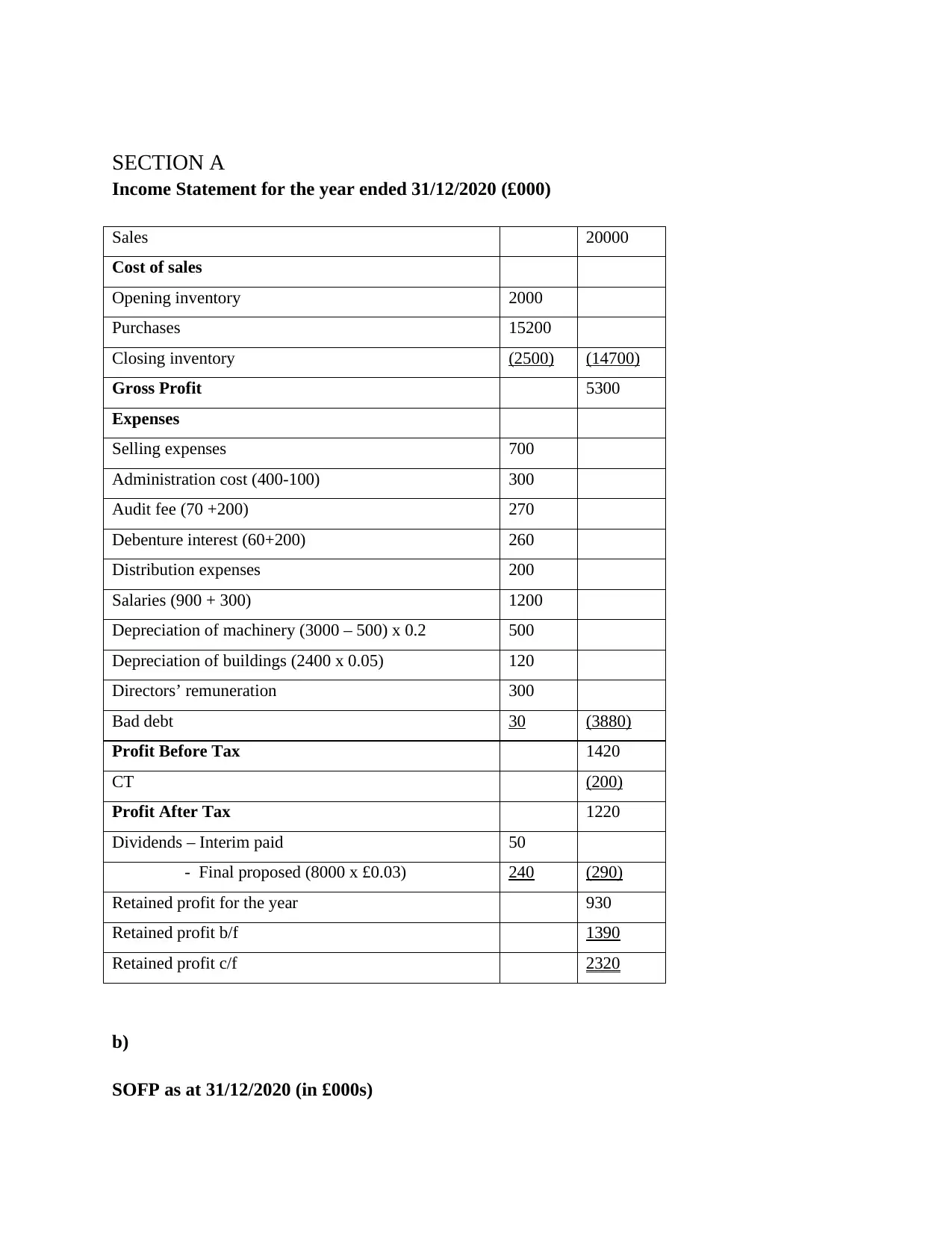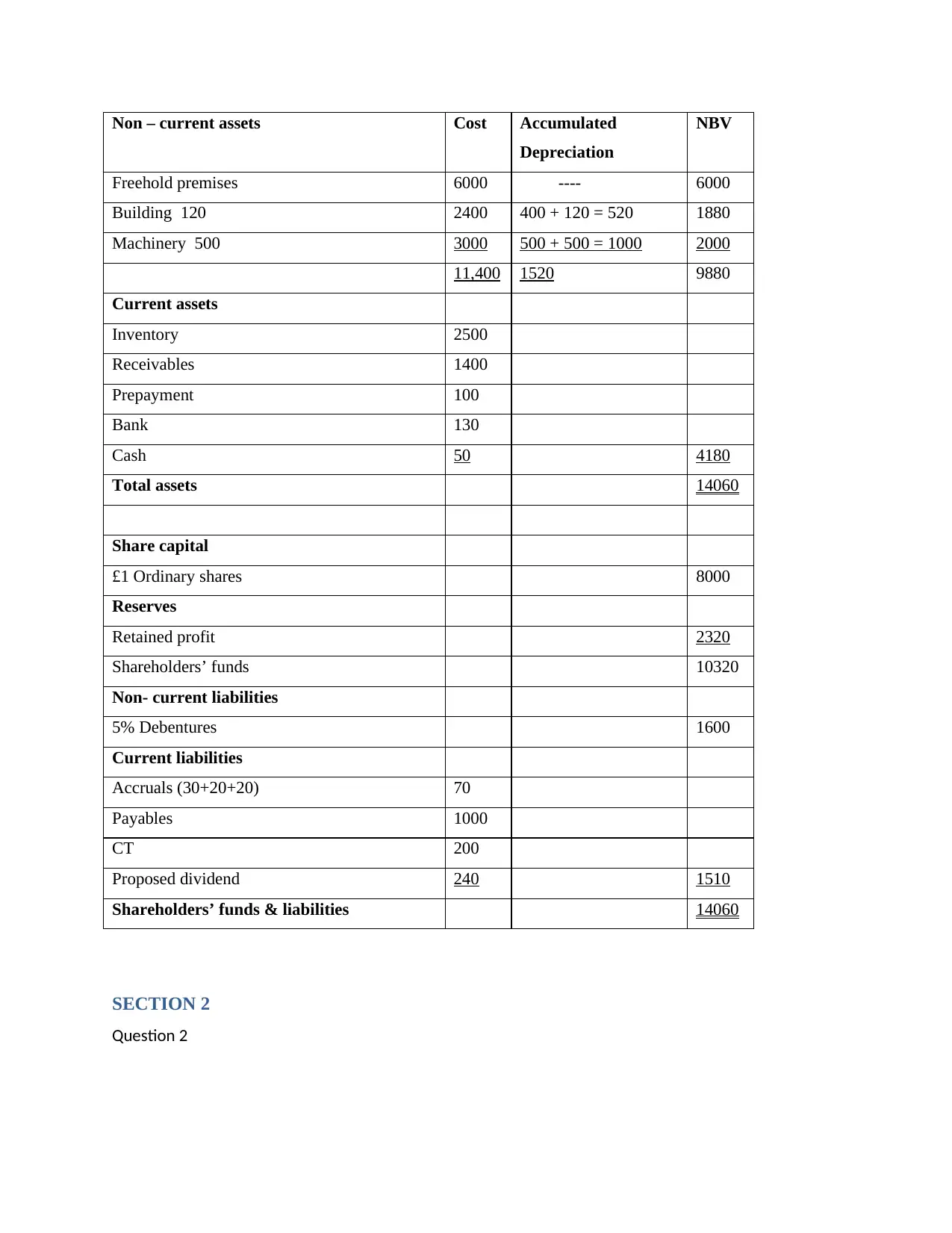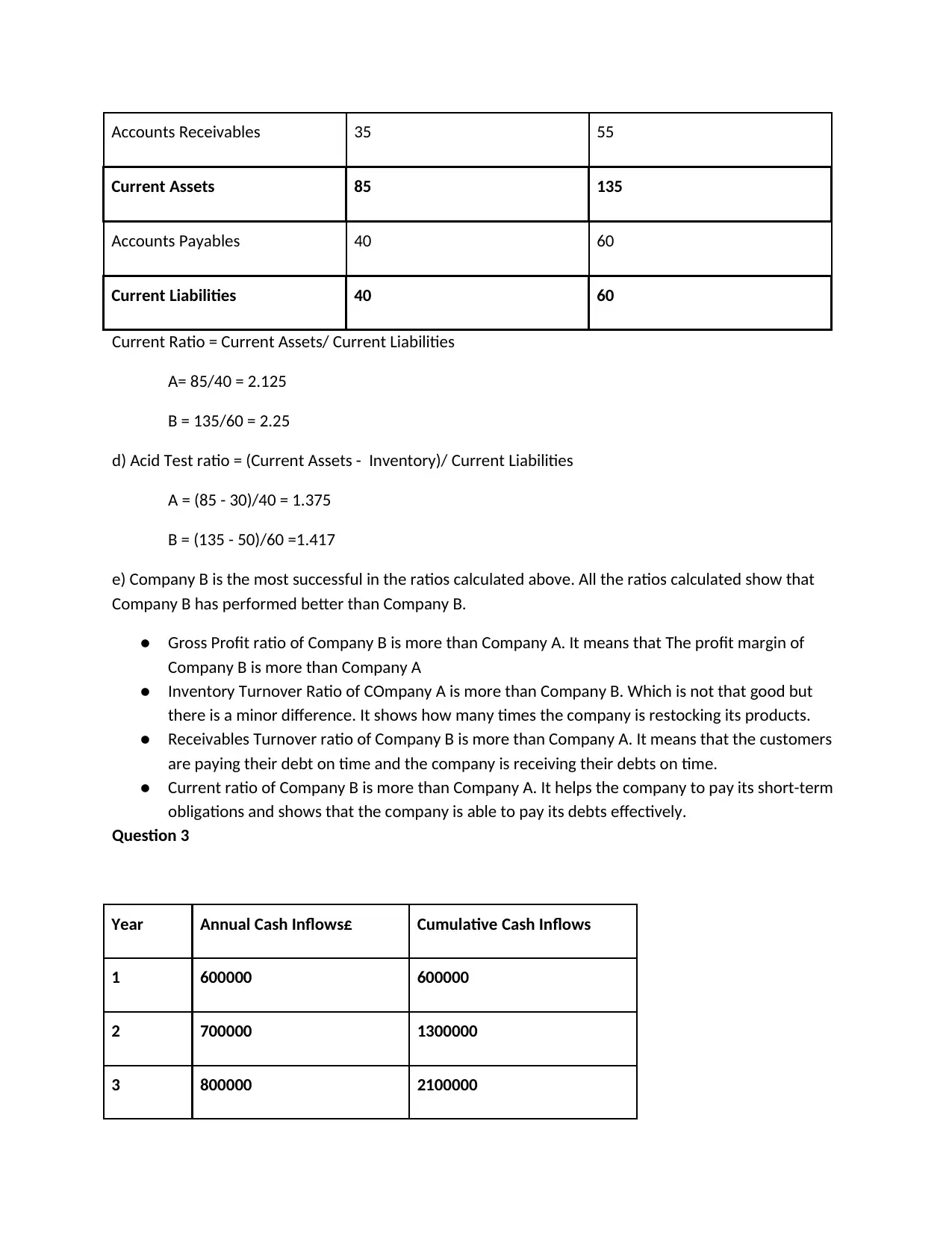Financial Statement Analysis, Ratios, and Project Appraisal Solution
VerifiedAdded on 2023/06/18
|6
|863
|275
Homework Assignment
AI Summary
This assignment solution provides a detailed analysis of financial statements, including the preparation of an income statement and statement of financial position (SOFP). It covers the calculation and interpretation of profitability and efficiency ratios, such as gross profit margin, operating profit margin, inventory turnover, and receivables turnover. Furthermore, the solution includes a current ratio and acid-test ratio assessment for Companies A and B, determining Company B to be more successful based on these metrics. The assignment also addresses investment appraisal by calculating the payback period and net present value (NPV) for a project, concluding with an explanation of the importance and advantages of the internal rate of return (IRR). Desklib offers a wide range of solved assignments and past papers to support students in their studies.
1 out of 6












![[object Object]](/_next/static/media/star-bottom.7253800d.svg)